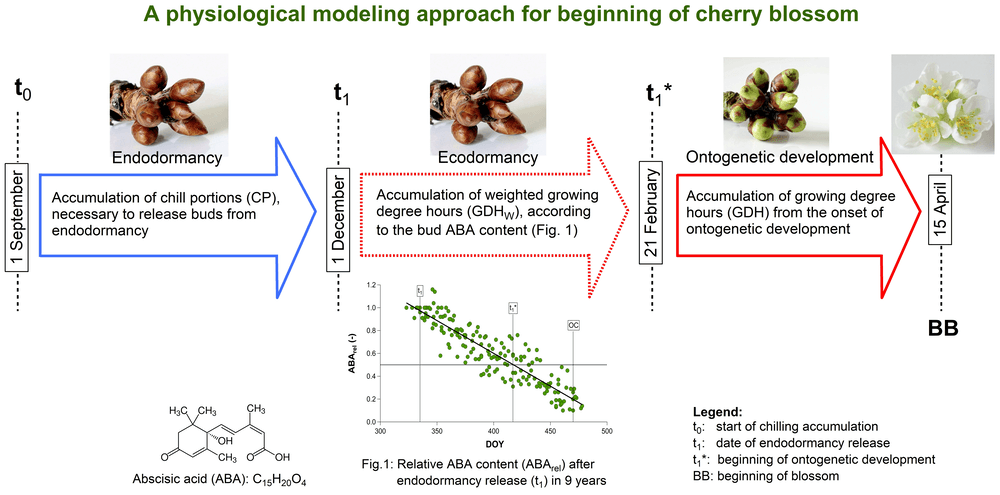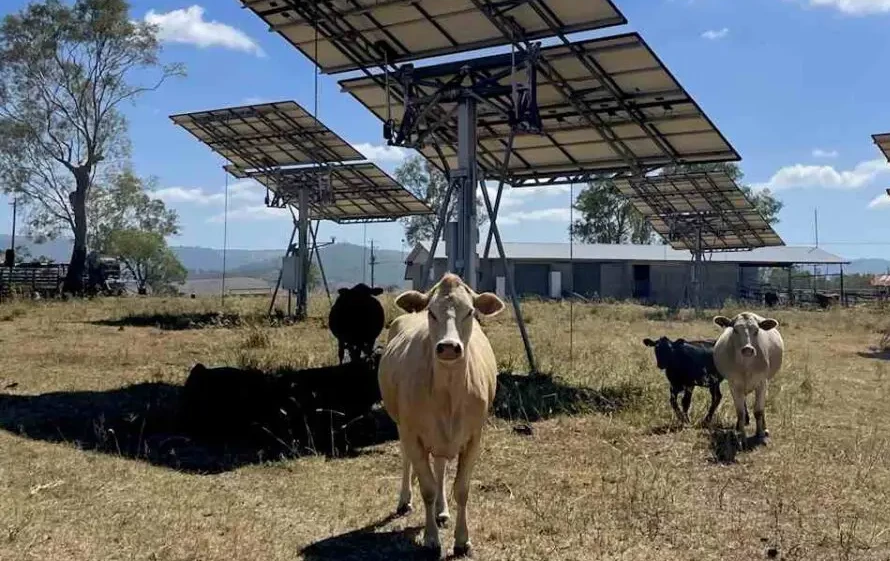In models based on plant physiology, certain parameters including the timing of the release of endodormance (t1) and the onset of ontogenetic development (t1*), remain to be optimised because due to the impossibility of directly observing these phases, they are often not included.
The potential consequences of missing or misinterpreting the ecodormancy phase could be substantial when it comes to predicting both the cold requirements of fruit trees and the blooming date, especially in the context of climate change.
An investigation conducted by researchers at the Faculty of Life Sciences of the Humboldt-Universität of Berlin (Germany), compares three phenological models (abbreviated as M1, M2 and M3) to predict the date of flowering in cherry cv. 'Summit' in an experimental orchard located in Berlin-Dahlem.
The study covers the growing seasons from 2011/12 until 2019/20 for the development of the model and 2020/21-2022/23 for its validation. The M1 model is based on an inverse modelling methodology in which the cold and heat requirements for the ontogenetic development of 'Summit' were optimised exclusively using observed flowering data.
M2 and M3, on the other hand, are more physiologically grounded due to the incorporation of biological knowledge at the outset; thus, the model parameters were computed precisely during the designated developmental phases. M3, a recently devised three-phase model, incorporates the abscisic acid (ABA) content of 'Summit' flower buds during the ecodormancy phase (t1 → t1 *) and the onset of ontogenetic development (t1 *).
Timing of t1 and t1*, as well as the level of bud ABA during ecodormancy, are crucial parameters for a physiological modelling approach, according to the results. It is probable that bud ABA concentrations also regulate ecodormancy in other perennial crops

The inclusion of bud ABA levels in future phenological models will require the modelling of bud ABA levels and their dynamics. Physiological studies that involve phenology modelling also require multi-year data, despite the fact that this is difficult to obtain and uncommon when metabolites are involved.
The conclusions that can be derived from solely optimised phenology models are hampered by the limitations of these models, as demonstrated by this research. The extended ecodormancy phase, which lasts an average of 82 days at the study site, introduces a significant potential for misinterpretation of biological processes. This was unequivocally illustrated through the utilisation of model M1.
This is also feasible when physiological processes are disregarded, for example when phenological modelling approaches are applied to large-scale phenological datasets. This study demonstrates that greater physiological understanding is required for the advancement of phenological modelling.
Additionally, it is important to mention that the scope of this research was limited to the sweet cherry cultivar 'Summit', which was cultivated in the Berlin-Dahlem area. The restriction to 'Summit' has, nevertheless, facilitated a more comprehensive understanding of the dormant stages exhibited by this 'model plant'.
While this research does not propose a universally applicable model for the initiation of sweet cherry blossom, it does provide guidance for the advancement of dependable and physiologically grounded phenology models, moving away from the current reliance on simplistic statistical methods.
Source: Chmielewski, Frank-M., and Klaus-Peter Götz. 2023. "Towards a Physiological Modeling of Sweet Cherry Blossom", Horticulturae 9, 11: 1207. https://doi.org/10.3390/horticulturae9111207
Melissa Venturi
University of Bologna (IT)
Cherry Times - All rights reserved











